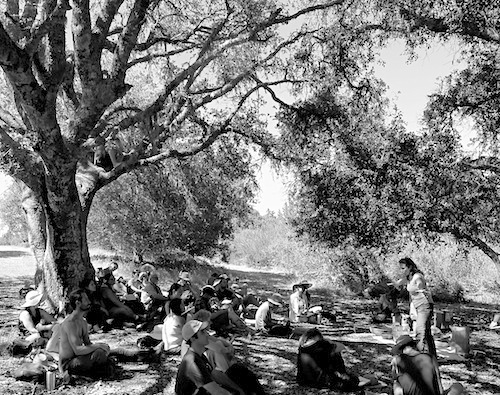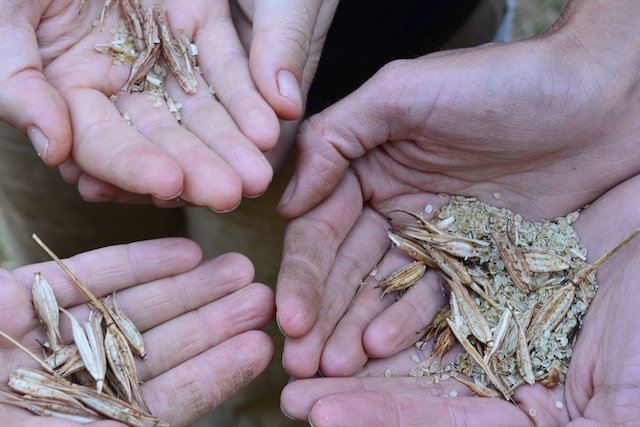Wild Work Days: None in 2015

There is nothing like learning by doing.
Join us next year for rare opportunities to tend the Wildlands Preserve at OAEC with knowledgeable OAEC staff.
Volunteers work on projects such as saving seed on native grasses and wildflowers; conducting restoration forestry activities such as thinning and limbing Douglas fir, preparing round poles for building projects, tending heritage oaks; creating habitat brush piles and bird boxes; and much more. We botanize, birdwatch, learn about the mammals and insects at home in the backcountry, and generally have a wild time!
Details:
- Time: 1-5pm. Please meet at the cob bench in the OAEC Core Area at 1pm sharp. Allow ten minutes to walk from the parking lot to the Core Area.
- Parking: park in the upper Nursery parking lot (2nd OAEC driveway on the right from the town of Occidental).
- Bring: water, snacks, long sleeves and pants, binoculars and a hand lens!
- Cost: free!
For more information, contact Lindsay Dailey or call (707) 874-1557 ext. 127.
COURSES
The Wildlands Program hosts courses with leading professionals working in the realm of wildlands management. Follow us to find out about upcoming courses!
Tending the Wild

In 2013, over 40 people gathered at OAEC for “Tending the Wild,” an OAEC course that melded indigenous knowledge with permaculture principles to address an issue that’s on many of our minds: how do we restore our degraded landscapes—and our relationships with those landscapes?
According to course instructors M. Kat Anderson and Dennis Martinez, “ownership” of natural resources in indigenous economic models means choosing stewardship. But because of the Western economic model’s emphasis on reaping maximum possible yields from land, many of us see “conservation” as one of two things:
- leaving nature exactly as we find it.
- entering nature to fix a problem (probably one that we created), then leaving it alone.
Both of these ideas are based on the belief that humans are separate from nature, rather than a part of it, and that sustaining ourselves from a landscape is inherently destructive. The goal of Tending the Wild was to change that story.

Through hands-on field work, presentations and discussions, course participants learned not just how to restore land but also to “re-story” their relationship to place; to reawaken to the potential that human beings can not only peacefully “co-exist,” but also benefit the land and life around us with our presence. For instance, we saw that digging up native yampah (Perideridia gairdneri) roots not only provides a nutritious food source, but also loosens the soil for the benefit of the yampah population. And thinning douglas firs to build round-pole structures both creates housing and strengthens our keystone oak population, currently overcrowded by young fir trees.
Melissa Elgin, course participant and member of the Federated Indians of Graton Rancheria, noted that the sheer number and diversity of people in attendance at Tending the Wild seemed to speak to the growing desire to remember ancient ways that have been forgotten in modern times.
“No matter who you are, wildtending is true to your ancestors,” Kat Anderson said on the first day of the course. It’s no wonder, then, that the yearning to reclaim our human ancestry—to again become of Place—is so widely felt.
Donate
The wildlands of our world are in need of stewardship. We invite your support to help us research, demonstrate, and disseminate best practices around wildlands management and finding our way back into right relationship with nature. Thank you!
- If you are interested in sponsoring a specific project, please contact Program Director Lindsay Dailey
- To generally support OAEC and the Wildlands Restoration program, click the button below.






